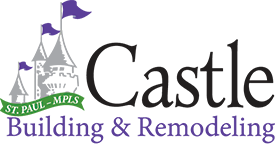Most commercial landscapers use sod to establish a lawn after a building has been completed. Many new homes are left with a barren landscape that the homeowner must tend to. Laying sod is much more effective than planting grass seed. The seeds are often eaten or scorched by the sun and require multiple plantings that lead to unprofessional results. Laying sod is a faster and more effective way to get your lawn started. Sod is tender and must be cared for with dedication, but you will have a plush, full lawn after a few months of work.
Watering Your Sod
Sod should be watered at least 4 hours per day (2 hours in the morning and 2 hours in the evening) for the first two weeks unless there is sufficient rainfall. Each time you water you should give the new sod approximately 3/4″ of water. A good way to measure how much water you are giving the area is to place an empty tuna fish can or anything flat that can hold water and turn your sprinkler on. When the water reaches the top of the tuna fish can or the equivalent on another container you will know 7how long to run your water for. Most people overestimate the amount of time they are actually watering so if your sod starts turning brown after the second day of watering, you may need to reassess your watering time. You also don’t want to overwater, so cut back if you get standing water. Continue to water at this rate for approximately 12 days or until the grass takes root.
Mowing Your Sod
Let your sod grow for at least two weeks before mowing. Mow the new grass at the highest blade setting.
Fertilizing Your Sod
Sod needs to be fertilized within two weeks with a 100% organic fertilizer. The most common types of organic fertilizer are ironite and milorganite and they can be purchased at any home improvement store. Do not use a chemical fertilizer until the sod has rooted into the ground. Chemical fertilizers can burn the roots of the sod, killing it. After initial fertilization, use 16-4-8 fertilizer a recommended rate Care and Maintenance of your Sod in March and September. During the summer use only an organic fertilizer such as those listed above.
Keeping Your Sod Healthy
During the late spring, summer and early fall we require that you put fungus control on your new St. Augustine grass. We can almost guarantee that it will get fungus and we feel it is better to pretreat (but this will not completely prevent) then to potentially lose your new grass because of it. We recommend Scotts Lawn Fungus Control because it is a granule and will stay around longer than a liquid.
If you still experience fungus problems after repeated treatments, especially in saturated areas, you should consult a company to come out that can spray using higher strength fungicide. Do not let the fungus go: you can lose your entire lawn!

